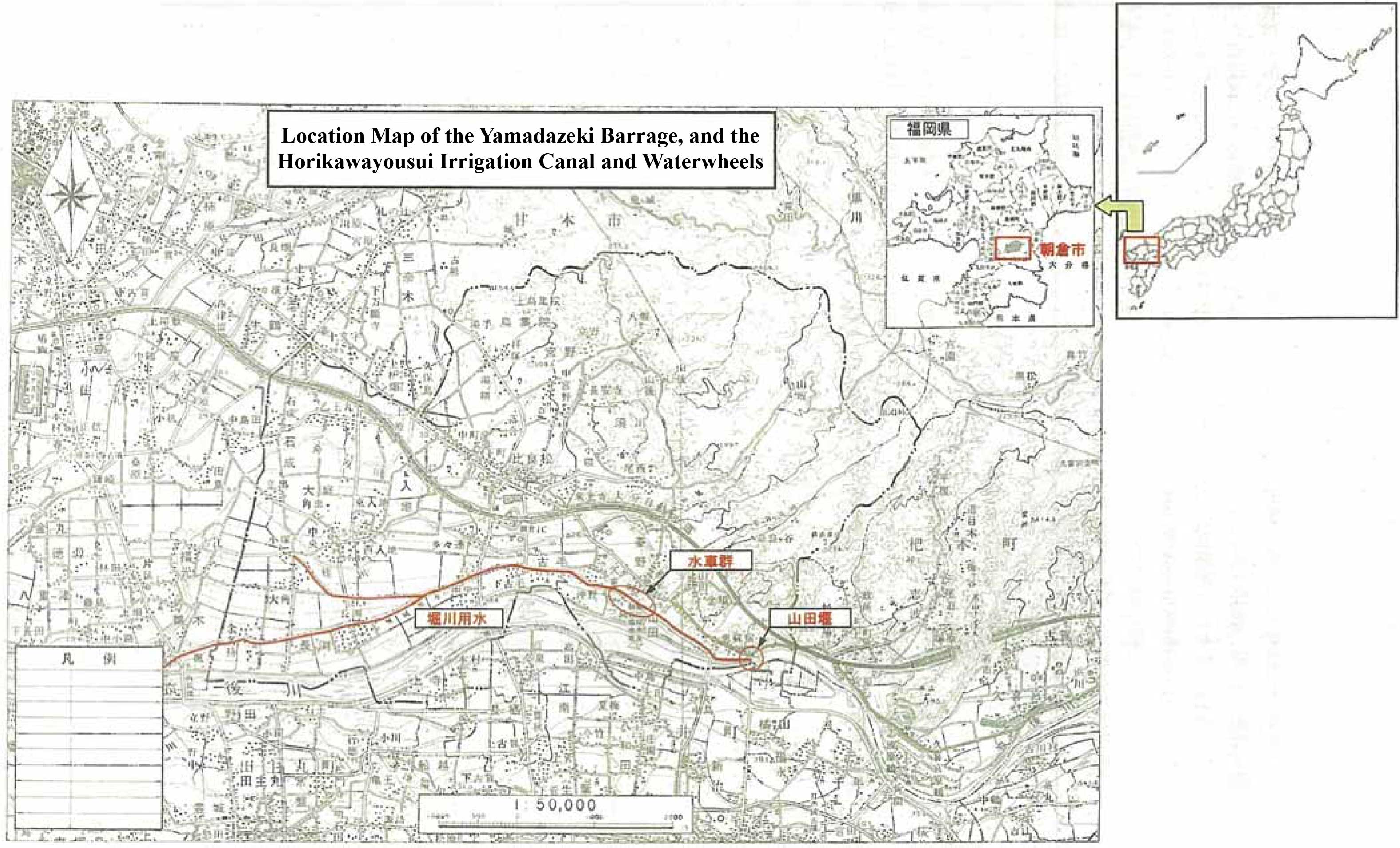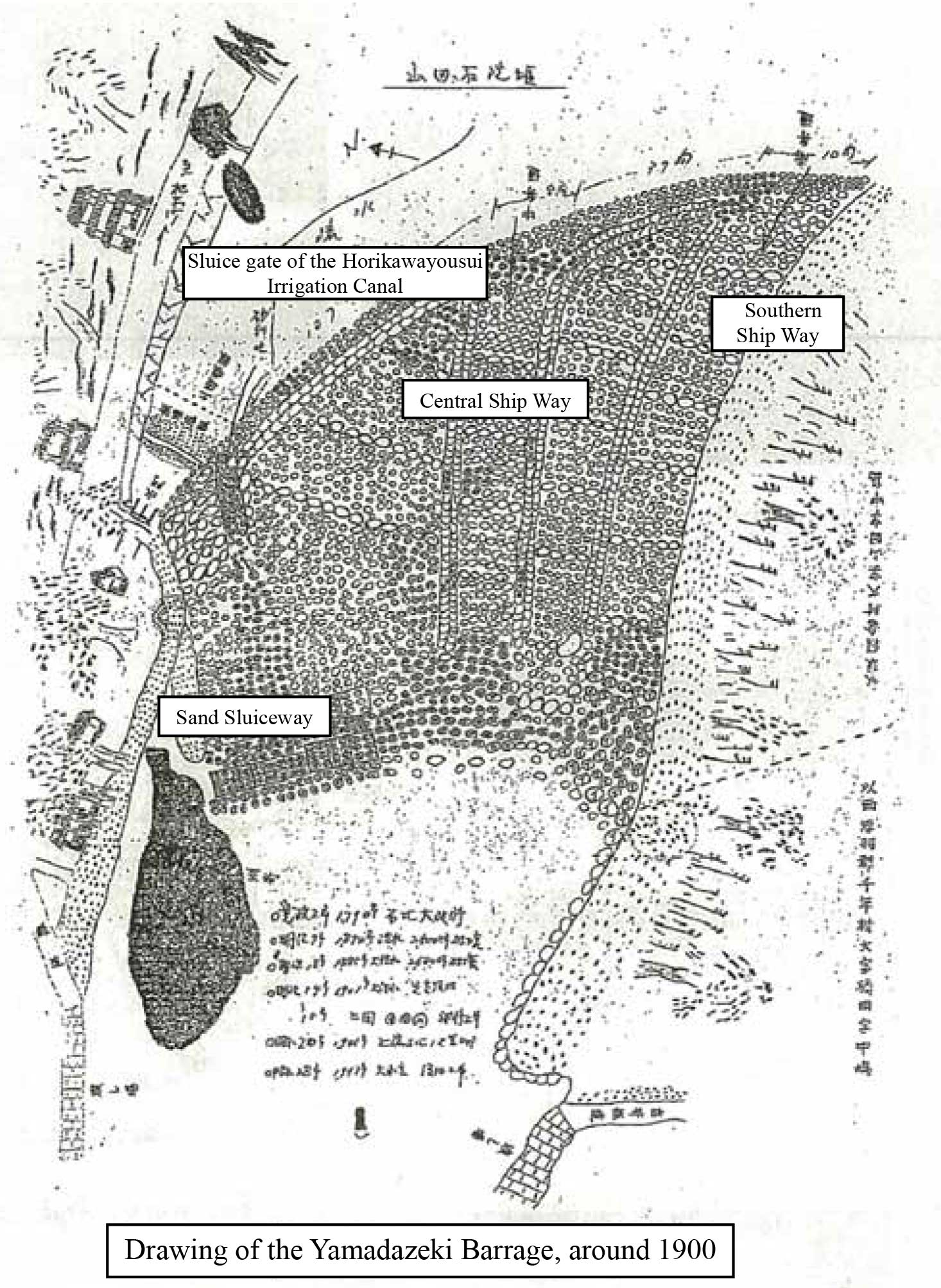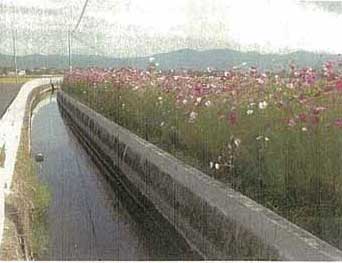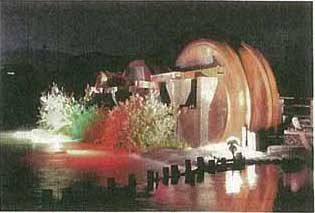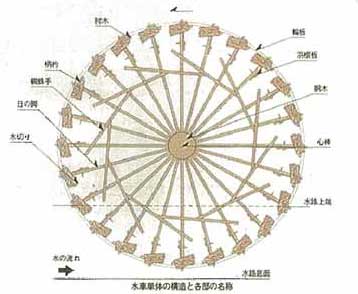Yamadazeki Barrage
Profile; ?>System located on Chikugo River Basin in Japan is recognized for using various innovative techniques in project formulation, engineering design and construction, ahead of its time.
Yamadazeki Barrage was constructed in 1790, Horikawayousui Irrigation Canal in 1663, and Horikawayousui Waterwheels (the completion of the Tripler wheels) in 1789. The Barrage, 320 meters in length and 3 meters in height, was built as a sloping floor-type stone barrage, when no other weir of this type existed in Japan. It is the only sloping floor-type stone weir in Japan and is characterized by its elaborate and strong enough structure to endure great water pressure and rushing torrents of the Chikugo River, the longest river of the Kyushu Region.
In the Asakura Region, the farming industry is supported by the irrigation facilities made possible due to construction of Yamadazeki Barrage on Chikugo River, the Horikawayousui Irrigation Canal taking off from the barrage and a system of Waterwheels consisting of one unit of triple wheels and two units of double wheels are all set up on Horikawayousui Irrigation Canal to carry water to rice paddies located above the Canal level The water wheels, composed of wooden wheels four to five meters in diameter and several buckets, are driven automatically by the water flow of Horikawayousui Irrigation Canal. The system is capable of delivering 553,000 m3 per day from the Chikugo River to irrigate an area of 652 ha.
A variety of innovative mechanisms seen in its design demonstrate that the weir was built with engineering techniques which are comparable to the present day techniques The weir was constructed adopting the "Karaishi-zumi", a stone masonry technique of piling up field stones in an elaborate manner. Nonetheless, the weir maintains the original form of the days it was constructed. The weir has an environment-friendly design which ensures sand free inflows to the canal and the waterwheels and allows fish to move freely and avoids interfering with shipping transport a prosperous industry of the days when it was constructed.
HIGHLIGHTS
Country: Japan
Province:
Latitude : 33 o21 Longitude : 130 o45
Built: 1790
River: Chikugo River Basin
Irrigated Area: 652 ha
65th IEC Meeting, Gwangju, Korea, 2014
